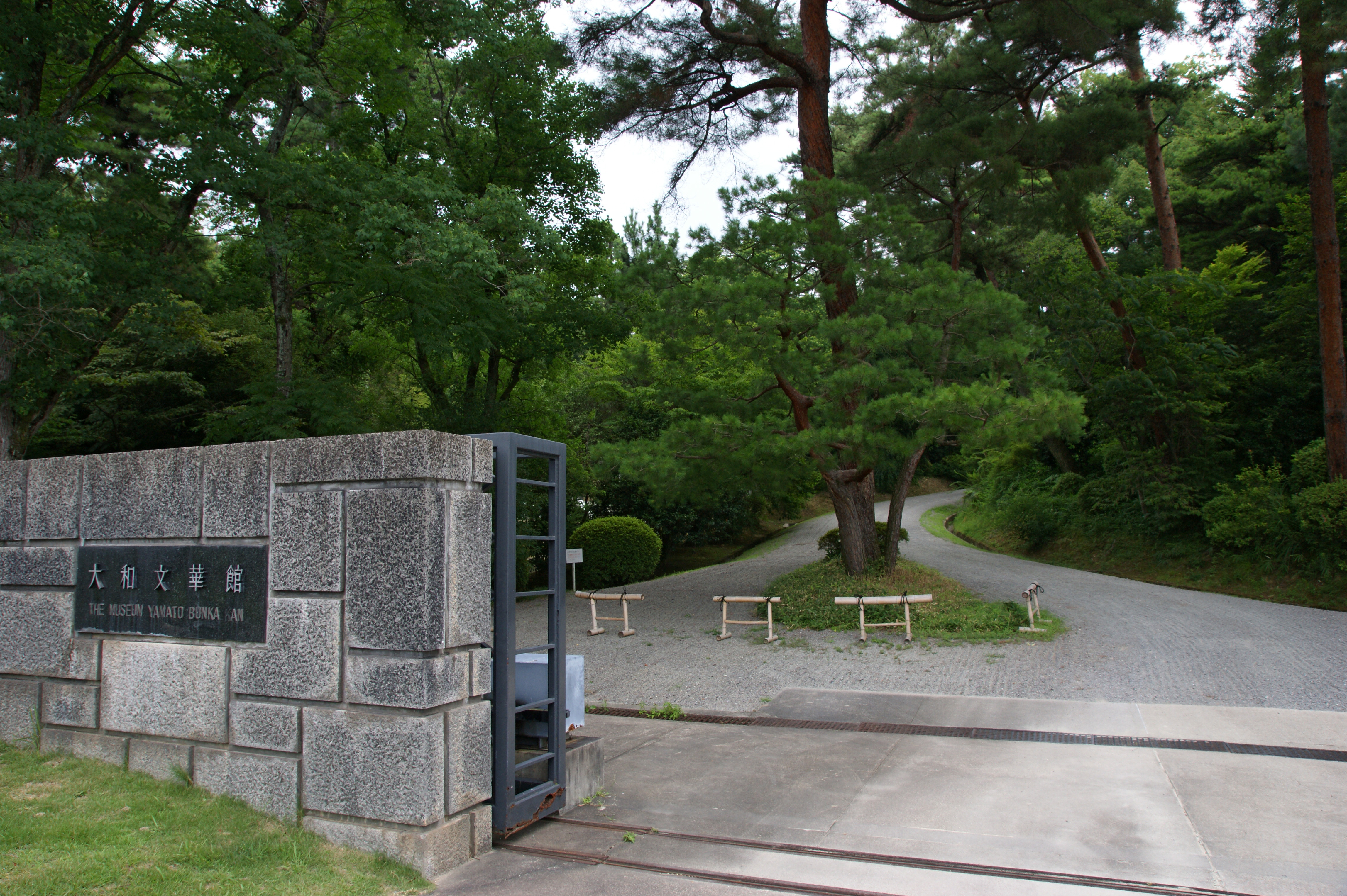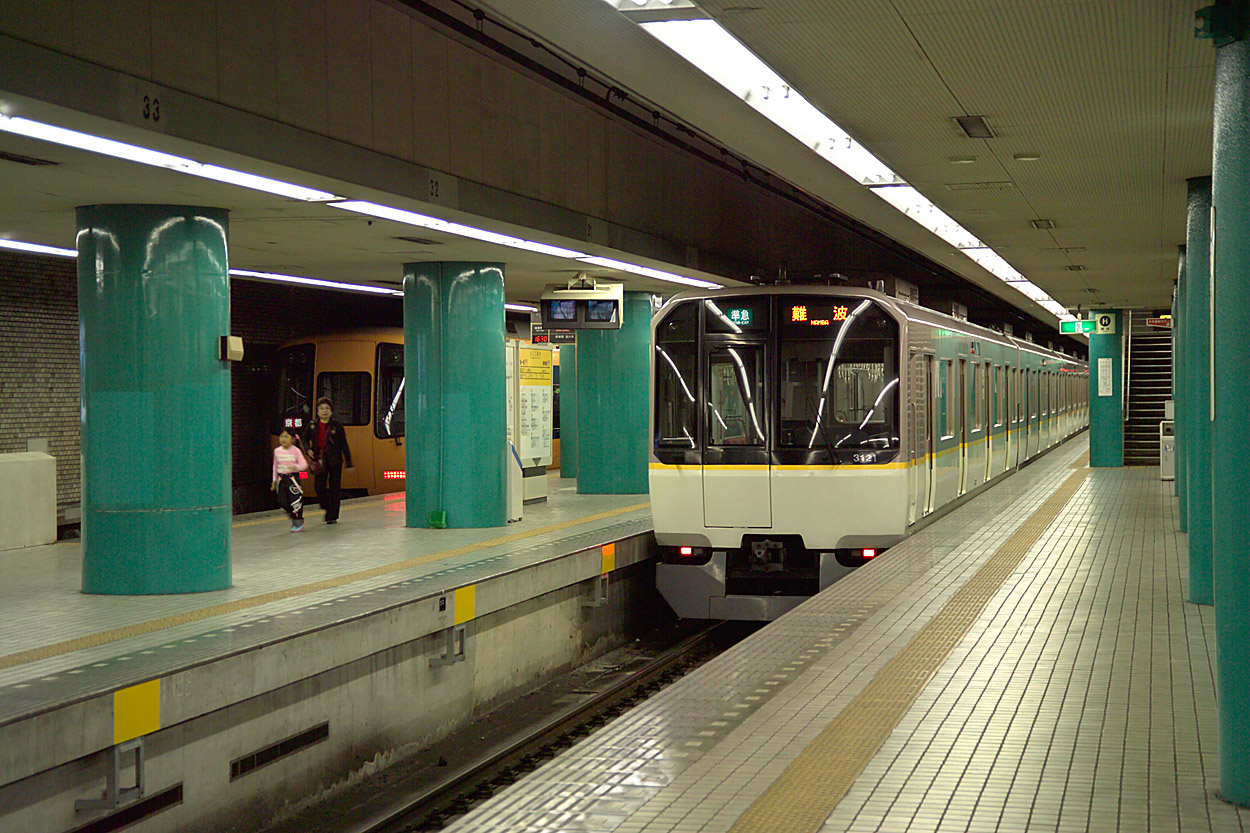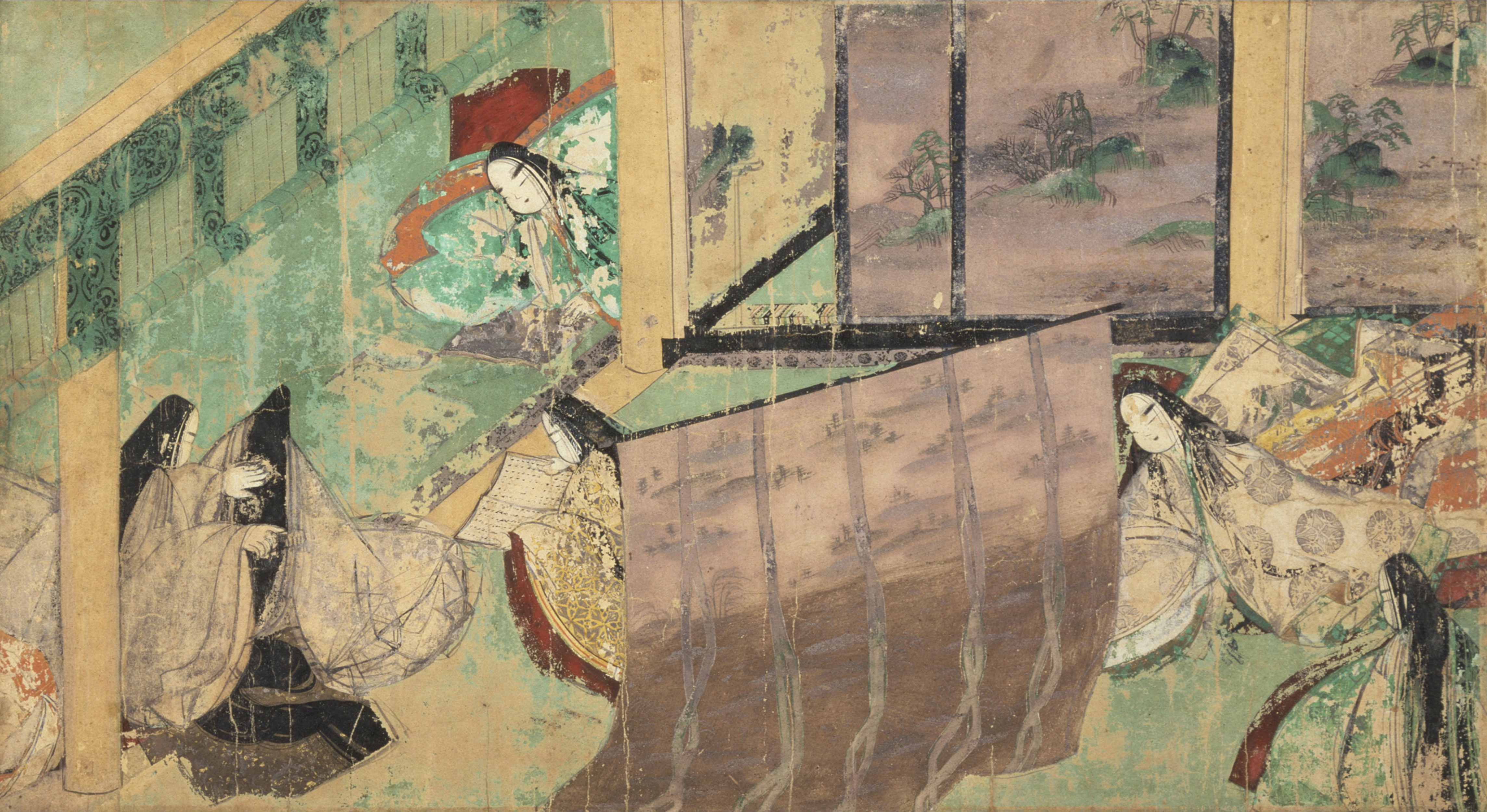|
Museum Of Japanese Art
is a museum of Asian art in Nara, Nara. The museum was established in 1960Martin, John ''et al.'' (1993) ''Nara: a Cultural Guide to Japan's Ancient Capital,'' p. 139./ref> to preserve and display the private collection of Kintetsu Corporation (named Kinki Nippon Railway Co., Ltd. till June 27, 2003). Collection This museum of Asian art has holdings of more than twenty thousand objects of sculpture, ceramics, lacquer, paintings, prints, textiles and calligraphy. The museum features a program of regularly changing exhibitions. The founding director in 1960 was art historian Yukio Yashiro. National treasures Two national treasures in the collection are illustrative scenes from . ...
|
Yamato Bunkakan04n4592
was originally the area around today's Sakurai City in Nara Prefecture of Japan, which became Yamato Province and by extension a name for the whole of Japan. Yamato is also the dynastic name of the ruling Imperial House of Japan. Japanese history * Yamato people, the dominant ethnic group of Japan * Yamato period, when the Japanese Imperial court ruled from Yamato Province * Yamato Kingship, the government of the Yamato period * Yamato clan, clan active in Japan since the Kofun period * ''Yamato-damashii'', the "Japanese spirit", or ''Yamato-gokoro'', the "Japanese heart/mind" * Yamato nadeshiko, the ideology of the perfect Japanese woman * Yamato Takeru, a legendary Japanese prince of the imperial dynasty * Yamato-e, classical Japanese painting * ''Yamato-uta'', alternative term for ''waka'' (poetry) * Yamatai, ancient geographical term that may be associated with Yamato * Daiwa (other) is spelled using the same kanji as Yamato Geography Japan * Yamato Provinc ... [...More Info...] [...Related Items...] OR: [Wikipedia] [Google] [Baidu] |
Nara, Nara
is the capital city of Nara Prefecture, Japan. , Nara has an estimated population of 367,353 according to World Population Review, making it the largest city in Nara Prefecture and sixth-largest in the Kansai region of Honshu. Nara is a core city located in the northern part of Nara Prefecture bordering the Kyoto Prefecture. Nara was the capital of Japan during the Nara period from 710 to 784 as the seat of the Emperor before the capital was moved to Nagaoka-kyō, except for the years 740 to 745, when the capital was placed in Kuni-kyō, Naniwa-kyō and Shigaraki Palace. Nara is home to eight major historic temples, shrines, and heritage sites, specifically Tōdai-ji, Saidai-ji, Kōfuku-ji, Kasuga Shrine, Gangō-ji, Yakushi-ji, Tōshōdai-ji, and the Heijō Palace, together with Kasugayama Primeval Forest, collectively form the Historic Monuments of Ancient Nara, a UNESCO World Heritage Site. Etymology By the Heian period, a variety of different characters had ... [...More Info...] [...Related Items...] OR: [Wikipedia] [Google] [Baidu] |
Kintetsu Corporation
, referred to as , is a Japanese railway holding company which primarily owns the Kintetsu Railway as well as Kintetsu World Express, Kintetsu Department Store, and its other 141 corporations, which are collectively known as Kintetsu Group. Its subsidiaries operates tourism, real estate, and shipping companies, and has a major rail car-building operation Kinki Sharyo which produces trains used in Japan, the United States, Egypt and Hong Kong. History , a passenger rail transit company in Kinki and Tokai regions, was founded after Kansai Express Railways merged with Nankai Railways on June 1, 1944. Kinki Nippon Railways changed its legal name in English to Kintetsu Corporation on June 28, 2003. On April 1, 2015, the corporation, was restructured into a holding company, splitting its railway, real estate, logistics and retail, and recreation service divisions. Kintetsu Corporation also changed the legal name to Kintetsu Group Holdings Co., Ltd. on the same day. Portfolio—sub ... [...More Info...] [...Related Items...] OR: [Wikipedia] [Google] [Baidu] |
Yukio Yashiro
was a Japanese academic, art historian, Botticelli scholar and Director of the Institute for Art Research in Tokyo. Biography In 1960, he became the founding director of the Museum of Japanese Art ('' Yamato Bunkakan'') in Nara, Nara. This museum of Asian art was established to preserve and display the private collection of the Kintetsu Corporation (Kinki Nippon Railway Co., Ltd.). Honors * Charles Lang Freer Medal, September 15, 1965.Freer Gallery of Art. (1965)''Third presentation of the Charles Lang Freer medal, September 15, 1965.''/ref> Selected works In a statistical overview derived from writings by and about Yukio Yashiro, OCLC/WorldCat WorldCat is a union catalog that itemizes the collections of tens of thousands of institutions (mostly libraries), in many countries, that are current or past members of the OCLC global cooperative. It is operated by OCLC, Inc. Many of the O ... encompasses roughly 100+ works in 100+ publications in 7 languages and in 1,000+ li ... [...More Info...] [...Related Items...] OR: [Wikipedia] [Google] [Baidu] |
Yoru No Nezame
, or ''Nezame'', is a Japanese story. It is one of the major representative Heian period texts. It is a courtly romance and belongs to the '' tsukuri monogatari'' genre.Nihon Koten Bungaku Daijiten Henshū Iinkai (1986:1898-1900) Composition The text exists in both three- and five-volume editions. Which was the original title is unclear. Also unclear is the author. The Teika manuscript of ''Sarashina Nikki'' identifies the author as the daughter of Sugawara no Takasue (1008 – c. 1059); however, there are no other means to corroborate this. Linguistic analysis suggests a post-1086 composition. The text as a whole is judged to be a c. 11th-century work.Kubota (2007:198-199) Major portions of the middle and end are no longer extant. Their contents may be inferred from other sources such as ''Mumyōzōshi'', '' Shūi Hyakuban Utaawase'', ''Fūyō Wakashū'', '' Yoru no Nezame Monogatari'', and '' Nezame Monogatari Emaki''. The text is a successor to ''Genji Monogatari is ... [...More Info...] [...Related Items...] OR: [Wikipedia] [Google] [Baidu] |
List Of National Treasures Of Japan (paintings)
The term "National Treasure (Japan), National Treasure" has been used in Japan to denote Cultural Properties of Japan, cultural properties since 1897. The definition and the criteria have changed since the inception of the term. These paintings adhere to the current definition, and were designated national treasures when the Law for the Protection of Cultural Properties was implemented on June 9, 1951. As such, they are restricted in transfer and may not be exported. Owners are required to announce any changes to the National Treasures such as damage or loss and need to obtain a permit for changes in location, transfer of ownership or intended repairs. The items are selected by the Ministry of Education, Culture, Sports, Science and Technology based on their "especially high historical or artistic value". This list contains 167 paintings from 7th-century Asuka period to the early modern 19th-century Edo period. In fact the number of paintings presented is more than 167, because in ... [...More Info...] [...Related Items...] OR: [Wikipedia] [Google] [Baidu] |
Chinese Piling Paintings
The Piling School (毗陵畫派), also called Changzhou School (常州畫派), was a genre of Chinese painting, named for its place of origin, now Changzhou in Jiangsu province. The style was influenced by contact with Japan, and examples are found almost exclusively in Japan and particularly in collections associated with the great Japanese Buddhist monasteries. Origin Such paintings and associated art works are a reflection of the vigorous medieval overseas trade between China and Japan. Piling () itself was a part of Changzhou close to Lake Tai in Jiangsu Province. Many other genre artists can be associated with this general area. Although their surviving works are few, the clear influence of their painting can be readily seen in shards of Yuan period blue-and-white porcelain from the Jingdezhen production area. Categorization Works of the Piling School may be rightly regarded as folk or popular works that have no association with named artists. An exception are the hanging ... [...More Info...] [...Related Items...] OR: [Wikipedia] [Google] [Baidu] |
Art Museums And Galleries In Nara, Nara
Art is a diverse range of culture, cultural activity centered around works of art, ''works'' utilizing Creativity, creative or imagination, imaginative talents, which are expected to evoke a worthwhile experience, generally through an expression of emotional power, conceptual ideas, technical proficiency, or beauty. There is no generally agreed definition of what constitutes ''art'', and its interpretation has varied greatly throughout history and across cultures. In the Western world, Western tradition, the three classical branches of visual art are painting, sculpture, and architecture. Theatre, dance, and other performing arts, as well as literature, music, film and other media such as interactive media, are included in a broader definition of "the arts". Until the 17th century, ''art'' referred to any skill or mastery and was not differentiated from crafts or sciences. In modern usage after the 17th century, where aesthetic considerations are paramount, the fine arts are s ... [...More Info...] [...Related Items...] OR: [Wikipedia] [Google] [Baidu] |
Museums Of Japanese Art
A museum is an institution dedicated to displaying or Preservation (library and archive), preserving culturally or scientifically significant objects. Many museums have exhibitions of these objects on public display, and some have private collections that are used by researchers and specialists. Museums host a much wider range of objects than a library, and they usually focus on a specific theme, such as the art museums, arts, science museums, science, natural history museums, natural history or Local museum, local history. Public museums that host exhibitions and interactive demonstrations are often tourist attractions, and many draw large numbers of visitors from outside of their host country, with the List of most-visited museums, most visited museums in the world attracting millions of visitors annually. Since the establishment of Ennigaldi-Nanna's museum, the earliest known museum in ancient history, ancient times, museums have been associated with academia and the preserva ... [...More Info...] [...Related Items...] OR: [Wikipedia] [Google] [Baidu] |
Art Museums And Galleries Established In 1960
Art is a diverse range of culture, cultural activity centered around works of art, ''works'' utilizing Creativity, creative or imagination, imaginative talents, which are expected to evoke a worthwhile experience, generally through an expression of emotional power, conceptual ideas, technical proficiency, or beauty. There is no generally agreed definition of what constitutes ''art'', and its interpretation has varied greatly throughout history and across cultures. In the Western world, Western tradition, the three classical branches of visual art are painting, sculpture, and architecture. Theatre, dance, and other performing arts, as well as literature, music, film and other media such as interactive media, are included in a broader definition of "the arts". Until the 17th century, ''art'' referred to any skill or mastery and was not differentiated from crafts or sciences. In modern usage after the 17th century, where aesthetic considerations are paramount, the fine arts are s ... [...More Info...] [...Related Items...] OR: [Wikipedia] [Google] [Baidu] |






